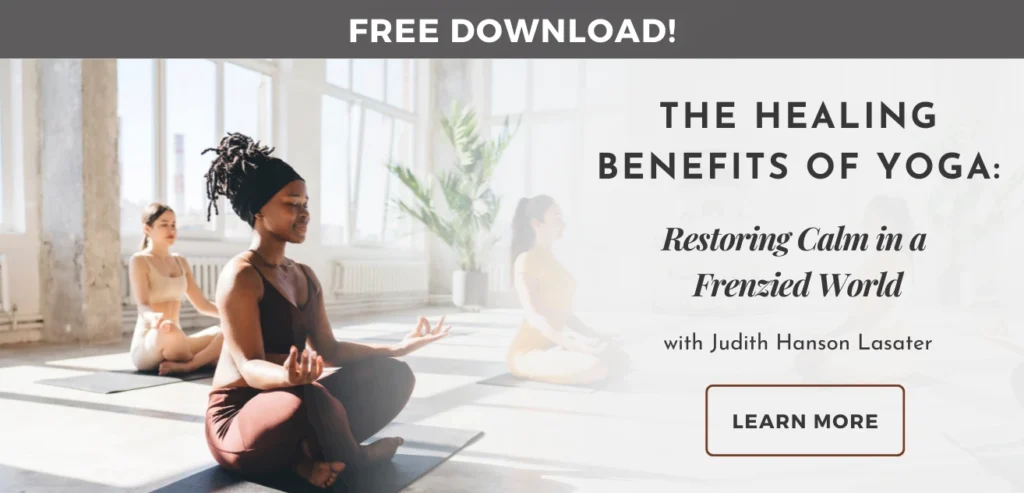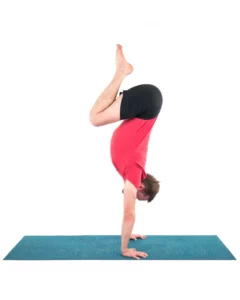How to Take Intention to Creation: Planning a Yoga Class

I was educated as a school teacher. In the past, I had written my fair share of lesson plans that usually started with, “by the end of the class the students will be able to …” Every lesson needs to have a purpose, and that purpose needs to be clearly articulated. Otherwise, we end up accomplishing nothing of lasting value.
It works the same in yoga: every yoga class we teach needs to have a purpose. We usually call it intention, and it’s basically an answer to the question, “what are you trying to accomplish?” It can also be framed as a statement: “By the end of the class, the students will experience … (greater range of motion in the shoulder, higher breath threshold, sense of stability and ease, a deeper connection to their community, etc.).” Of course, we cannot control the student’s experience, so not everybody will feel the same, but we can certainly make strides in moving them toward that intention.
I always thought of this sort of planning as reverse engineering, because you work your way backward from the desired outcome. You set a goal of where you want your students to arrive (point B) and figure out what needs to happen for them to get there from their current state (point A). There are many paths to get from point A to point B, but it’s clear that some of them will be more effective and direct than others. And since you always have preset time limitations for your class, the more directly you can get there, the better.
Identifying Your Intention and Creating an Intentional Class
To find the most direct path, it is useful to first identify which dimension of the human system your intention addresses (physical or vital body, intellectual mind, personality or heart center). Each has its preferred set of yogic tools that makes it easier to get access to that particular dimension. And one of those preferred tools needs to become primary in manifesting your intention, with other tools playing a supporting role.
Let’s say that your intention for the class is to relieve shoulder tension. This intention corresponds to the physical body—annamaya kosha—and the main tool to get access to annamaya is asana. Once you make a selection of your primary tool (asana), you will need to come up with three specific ideas that will help you manifest your intention (to relieve shoulder tension). For example, you can choose:
- Poses that strengthen the upper back and muscles that bind the shoulder girdle to the spine to provide better support for the shoulder;
- Arm sweeping motion to mobilize the shoulder and increase blood flow to the joint;
- External shoulder rotation motion to stretch the front of the shoulder and counteract the common habitual action of internal shoulder rotation.
Then you can choose one to two poses for each idea, and one or more poses that manifest several of those ideas at the same time.

Then it’s just a matter of arranging your core ideas in proper order and adding appropriate warm-up, along with preparation and compensation poses for more challenging movements.
Add Supporting Elements and Edit Ideas
Your supporting elements might be breath awareness and visualization. They need to run through the entire practice as an undercurrent to support and help manifest your main intention. In terms of breath, you can focus on a deep connection between breath and movement to minimize the risk of injury. In terms of visualization, you can thread the idea of awareness of the shoulder girdle throughout the practice. Then bring it to its logical conclusion with the final visualization of the shoulder girdle sitting on top of the ribcage, to increase awareness of the structures that comprise the shoulder girdle, and to relax the muscles that bind the shoulder girdle to the ribcage and spine.
Once all the elements are in place, you would go through the entire practice and edit out the filler elements that inevitably creep in and distract from the main intention. Every single thing you teach to your students needs to have a clear purpose within this practice in moving your students toward point B of your intention.
Afterward, you would check the practice again for flow and consistency. And voila! You have an effective and meaningful yoga practice. I put all those points into this “How to plan a yoga class” template for quick reference.
Also, read...
Teaching Svadhyaya: 3 Ways to Encourage Self-Study in Yoga
In Celebration of Gray-Haired Yoga – Busting the Myth of the Yoga Body
Related courses

Educated as a school teacher, Olga Kabel has been teaching yoga for over 14 years. She completed multiple Yoga Teacher Training Programs but discovered the strongest connection to the Krishnamacharya/ T.K.V. Desikachar lineage. She had studied with Gary Kraftsow and American Viniyoga Institute (2004-2006) and received her Viniyoga Teacher diploma in July 2006, becoming an AVI-certified Yoga Therapist in April 2011. Olga is a founder and managing director of Sequence Wiz— a web-based yoga sequence builder that assists yoga teachers and yoga therapists in creating and organizing yoga practices. It also features simple, informational articles on how to sequence yoga practices for maximum effectiveness. Olga strongly believes in the healing power of this ancient discipline on every level: physical, psychological, and spiritual. She strives to make yoga practices accessible to students of any age, physical ability, and medical history, specializing in helping her students relieve muscle aches and pains, manage stress and anxiety, and develop mental focus.



